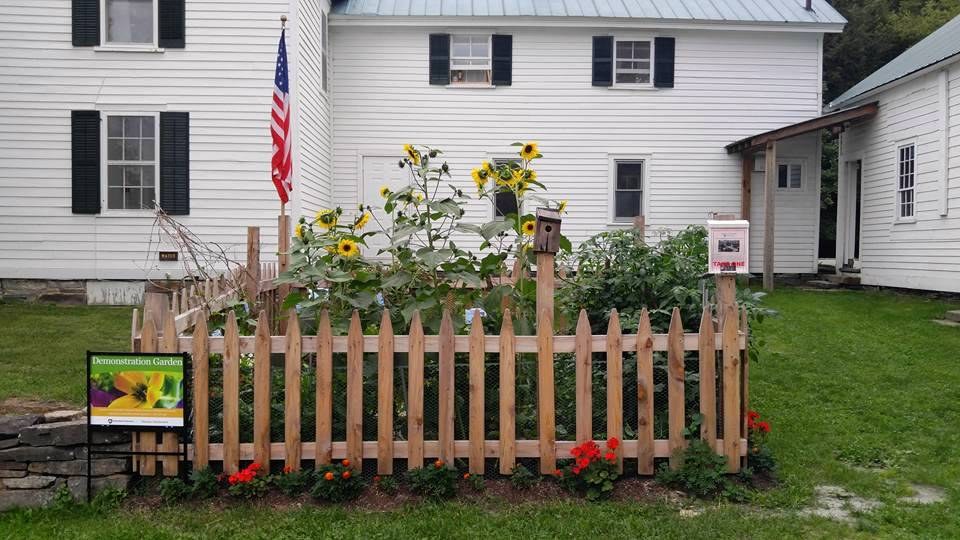The Wheaton House at Salt Springs State Park serves as a welcome area for park visitors. The Master Gardener Class of 2016 in Susquehanna County recreated what the Wheaton Family's kitchen garden may have looked like with the 1850s Historical Kitchen Garden at Salt Springs State Park.

Historical Garden enclosed with picket fence
In 1850, a kitchen garden would have been planted near the house, just steps from the kitchen, to allow quick access to vegetables and herbs. A kitchen garden was different than field crops, like potatoes or corn. The vegetables that the Wheatons would have selected were beans, chard, cucumbers, lettuce, pumpkins, and spinach. The Wheatons would have also included herbs and flowers for culinary and medicinal purposes. Flower petals were cooked, dissolved, and used in emulsions, powders, syrups, and tonics to treat ailments. Most of the plants grown in kitchen gardens included varieties that could be traded locally or heirloom seeds passed down from generation to generation. The Wheaton's garden would have been significant. In established towns, meat, sugar, coffee, and flour would have been available at stores, but vegetables came from kitchen gardens. The Wheatons would have preserved or stored some vegetables grown during the summer to provide for their families throughout the winter. If a family's kitchen garden failed, it is likely that although they could survive the winter, their nutrition would suffer.
Although it is difficult to identify precisely which varieties the Wheatons would have planted, Master Gardeners selected heirloom varieties similar to those grown for the period and suitable for today's USDA Plant Hardiness Zone. This year, 2024, Master Gardeners chose to plant French Breakfast Radish, Golden Beet, Oxheart Carrot, Painted Lady Runner Bean, White Vienna Kohlrabi, Danish Ballhead Cabbage, Calabrese Broccoli, Potatoes, Basil, Parsley, Garlic, Chamomile, Dill, Onions, Borage, Popcorn, Henry Wild Sunflower, Zebrina Hollyhock, Bachelor Buttons, Zonal Geraniums, Cucumbers, Turnips, and Four o-Clocks.

